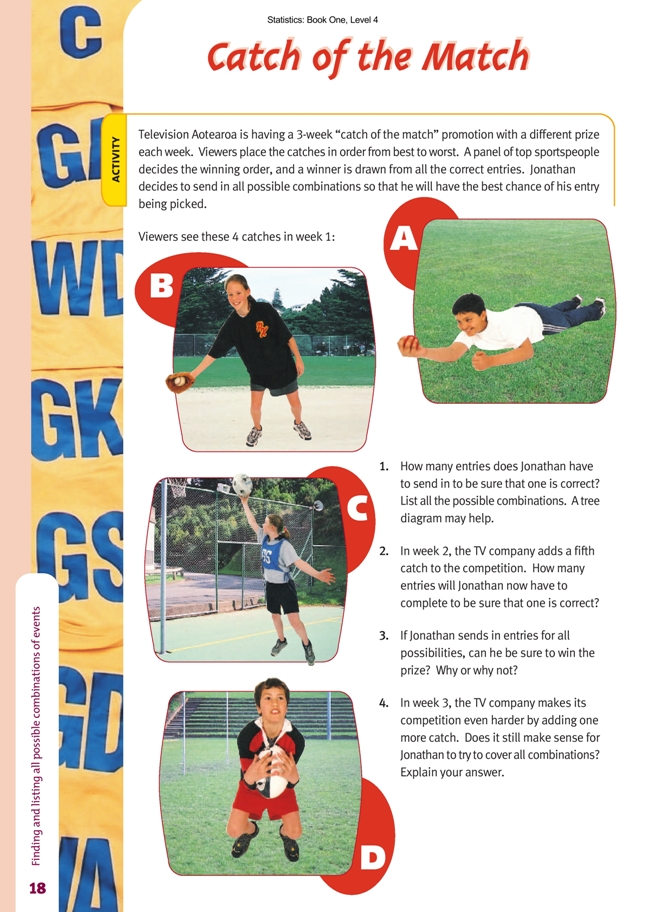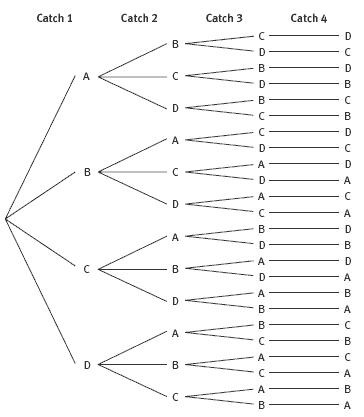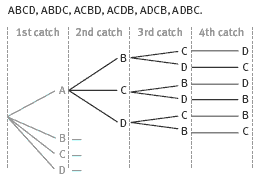This is a level 4 statistics activity from the Figure It Out series.
A PDF of the student activity is included.
Click on the image to enlarge it. Click again to close. Download PDF (801 KB)
find all possible outcomes using a tree diagram
evaluate findings from probability activities
Give the students the opportunity to sort this activity out for themselves. Most will choose to list all the possible outcomes for the scenario in question 1, but if they have already met tree diagrams, they may want to use this method as an alternative. Here is a tree diagram that shows the number of ways in which 4 catches can be ordered:
For a detailed discussion on drawing tree diagrams, see the notes for Family Feast (page 17 of the students’ book). See also the tree diagrams in the Answers.
Questions 2 and 4 require the students to find out how the number of permutations (arrangements in which order matters) can be calculated. The numbers involved quickly become too great for a list or a tree diagram to be practicable.
If there are 4 things (such as objects, actions, or people) to be put in order, the number of possible arrangements is 4 x 3 x 2 x 1 = 36. If there are 5 things, the number of possible arrangements becomes 5 x 4 x 3 x 2 x 1 = 120. The multiplier decreases by 1 each time because there is 1 fewer thing available for selection (since it has already been “taken”).
Note that the number of permutations of 5 things can be written: 5! = 120. Likewise, 6! = 720. 6! is read “6 factorial”. Some students may have noticed that scientific calculators have a factorial key. If they experiment with this key, they will discover that the number of permutations increases rapidly every time a further choice is added. In fact, they will discover that the number of permutations quickly exhausts the capacity of their calculator.
Answers to Activity
1. 24. Assuming that A is the best catch, we get this set of possibilities:
Similar lists and diagrams can be produced for each of B, C, and D as best catch. Each list or diagram represents 6 different combinations. 4 lists x 6 combinations = 24 entries.
2. If 4 catches give 24 possibilities, adding an extra catch means 24 x 5 =120 possibilities. This could also be shown on a tree diagram, but it would require
a large sheet of paper and some very careful planning to ensure that everything fitted!
3. No. Other people may have the correct answers as well, in which case, the winner is drawn from all those who have sent in a correct entry.
4. No. He would have to complete 720 entry forms.


